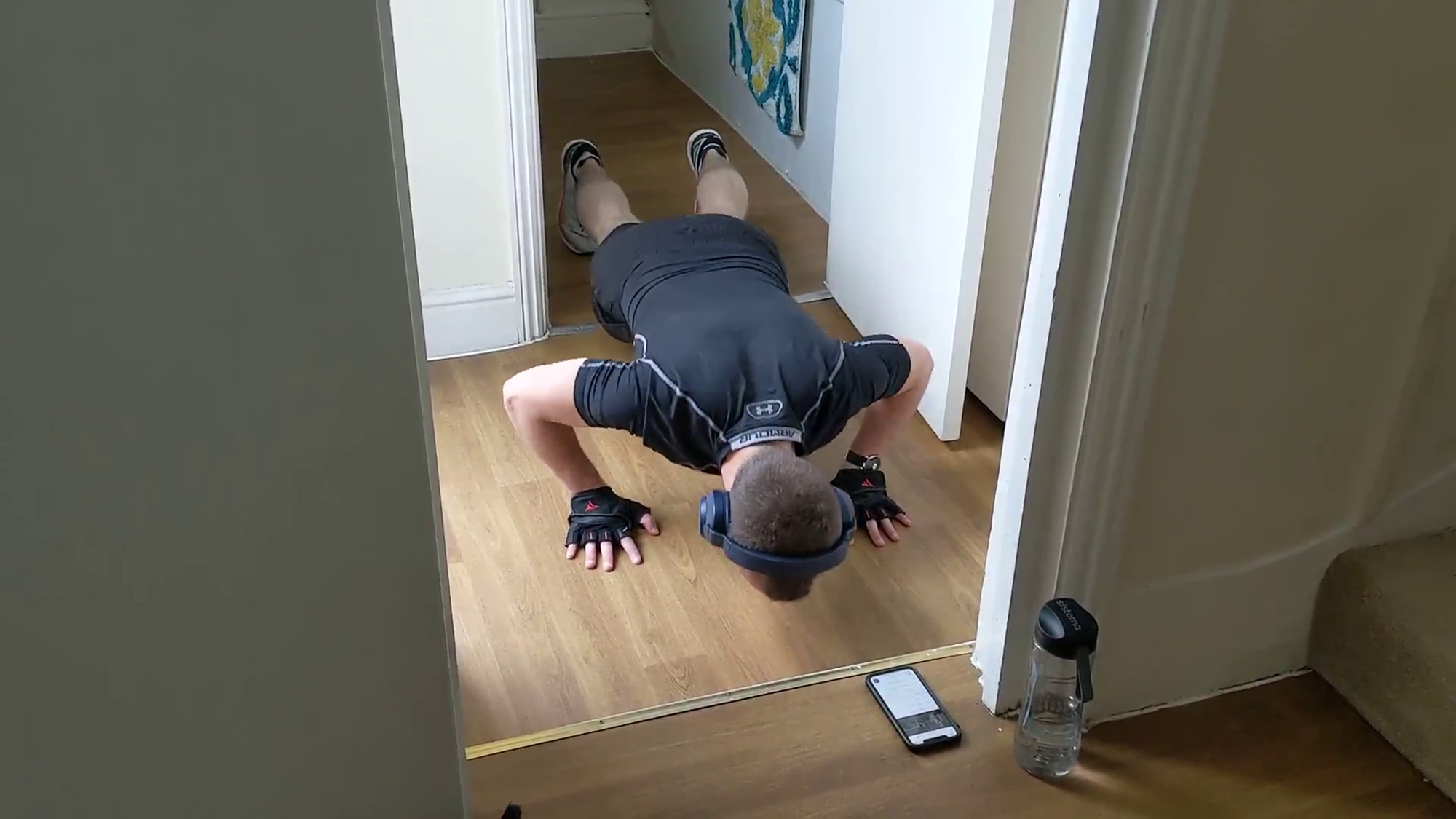I switched the gym for home workouts for a year—here's why I'm not going back
Training at home has made my workouts more varied, flexible, and enjoyable


Like most people, when I decided that I would take my fitness more seriously, I joined a gym. I went most days for a while, so although it was expensive, I felt like I was getting good value from my membership.
Initially, my goal was to drop some pounds, and while you can buy the best exercise machines to lose weight for your home, I don't have space for a treadmill, exercise bike, and rowing machine in my house.
Then I started getting into the cardio vs weights for weight loss debate. Resistance training with dumbbells, kettlebells, and weights machines seemed to come out on top, plus then you build muscle and get stronger too.
I left the cardio machines behind and made my way down to the free weights area. But this is where my relationship with the gym began to falter. My goal has never been to bulk up, so I didn't feel like I really fit in with the weightlifters.
And while I felt out of place, the irrational part of my brain decided that I still needed to be accepted by the group, so I began lifting heavier and heavier weights in a misguided attempt to impress those around me.
Overtraining is never a good idea, so when the pandemic hit, I'd already fallen out of love with the gym and went full-steam into home workouts instead. Two years later, I'm fitter than I've ever been. Here's what happened when I made the switch.

James is an experienced fitness writer and fan of accessible at-home workouts. He was a regular at the gym until 2020, when he made the switch to training at home with a set of dumbbells. James is always on the lookout for ways to make exercising and strength training fun and affordable.
1. My training was more varied
To make going to the gym a regular habit, I developed a routine. I'd go at the same time every day, and I created a workout plan for myself that I stuck to each session. It worked—I did make it a habit—but there was no variety to my exercise.
Start your week with achievable workout ideas, health tips and wellbeing advice in your inbox.
Having a rigid routine like this can get a bit boring, but there's another reason to keep your training varied; it gets better results. According to a study published in PLOS ONE, variety makes you more motivated and helps build muscle.
My previous routine was cobbled together from things I'd read about, but there was no science behind it. Exercising at home meant I could research a program, watch guided tutorials, and join instructor-led online sessions.
Switching to home workouts also helped me be more adventurous. I rolled out a mat and tried a Pilates class, used an online workout to experiment with high-intensity resistance training, and started regular HIIT workouts.
2. I exercised at my own pace

By the time I was regularly using weights at the gym, I'd been diagnosed with a long-term health condition, and I really struggled to gain weight. Even though I used the best protein powders and ate a lot, I wasn't gaining visible muscle. So I felt like I had to prove myself in other ways.
I'd sit down at the weights machines, dial the weight up high, and struggle through a set with poor form, putting myself at the risk of injury. But, as a study in Sports Health found, overtraining like this can actually harm your body. This internalized pressure to keep up with everyone else completely disappeared when I switched to at-home workouts.
I didn't feel the need to impress anyone with no one around, and I could play music, podcasts, or TV shows to keep myself relaxed. I also realized I didn't need to worry about choosing the 'right' workout kit, so if I wanted to wear a worn pair of shorts or an old t-shirt to exercise, I could.
This calmer approach extended to my workouts too. I gave myself enough time to rest between sets, stopped feeling under pressure to lift the heaviest weight, and would modify exercises if they didn't feel right for my body. Taking longer rests between sets actually helps build muscle faster as well, according to a study published in the Journal of Strength and Conditioning Research.
3. Flexible routines meant that I exercised more
I overtrained at the gym, but I could exercise more at home safely. When your home doubles as an exercise space, it's easier to fit in some short activity when you have a few moments.
Resistance training sessions were still my priority, but if I wanted to do a 10-minute ab workout to train my core or have a quick stretch away from my desk, I could. I didn't even need to get changed for some activities, saving more time.
As my mindset shifted from exercise being a thing I did at the gym to a way of living, I found it easier to incorporate activity into my day. That's how I started walking every morning as a low-impact way to move before work.
And because I knew I had one of the best kettlebells sitting just downstairs, when I was making a coffee or grabbing a snack, I could quickly do a round or two of kettlebell swings, which raised my heart rate and worked my core.

James is a London-based journalist and Fitness Editor at Fit&Well. He has over five years experience in fitness tech, including time spent as the Buyer’s Guide Editor and Staff Writer at technology publication MakeUseOf. In 2014 he was diagnosed with a chronic health condition, which spurred his interest in health, fitness, and lifestyle management.
In the years since, he has become a devoted meditator, experimented with workout styles and exercises, and used various gadgets to monitor his health. In recent times, James has been absorbed by the intersection between mental health, fitness, sustainability, and environmentalism. When not concerning himself with health and technology, James can be found excitedly checking out each week’s New Music Friday releases.